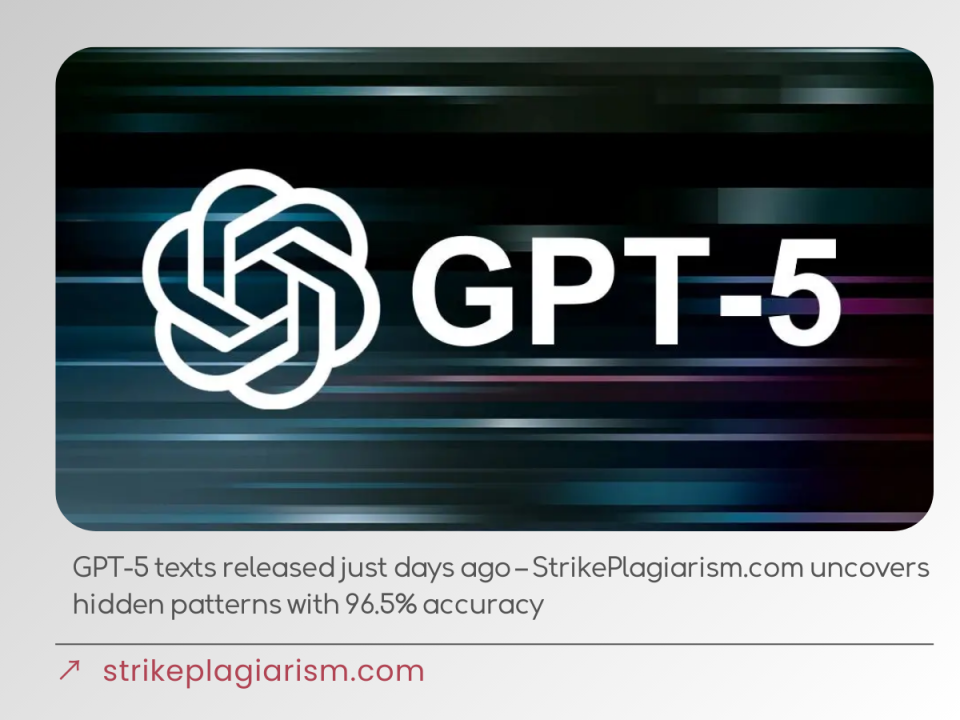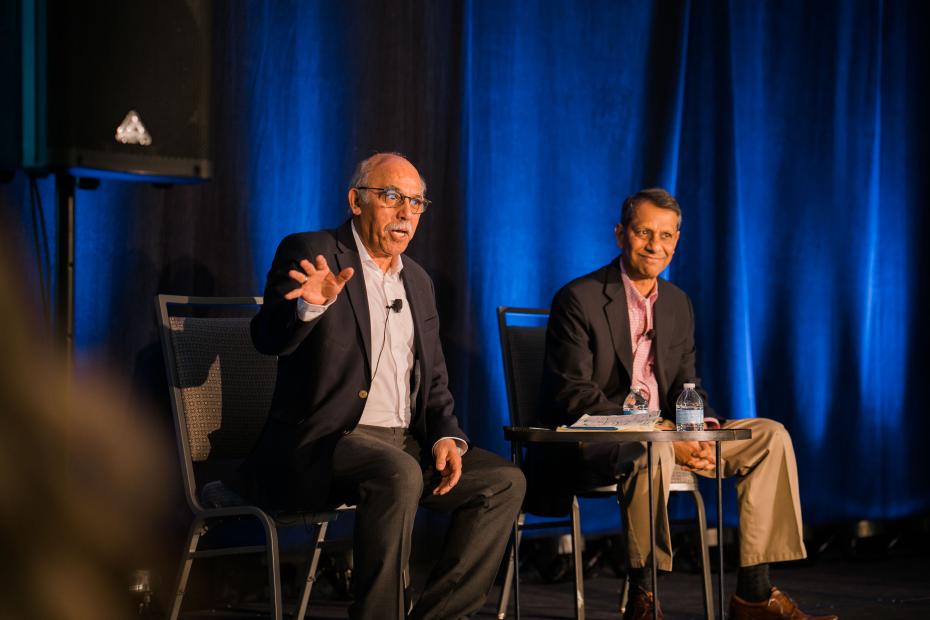When GPT-5 was announced, the academic world braced for impact. Its advanced semantic modelling, near-human syntax, and ability to mimic discipline-specific writing styles raised urgent questions: how can universities ensure originality when AI has become almost indistinguishable from human authorship?
Earlier detection systems could catch GPT-3 or GPT-4 with relative confidence. But GPT-5, released just days ago, threatened to redraw the line between authentic and AI-generated scholarship. For institutions striving to protect academic integrity, the stakes could not be higher.
How StrikePlagiarism.com responds
Within hours of GPT-5’s release on 7 June, StrikePlagiarism.com tested its AI detection module against freshly generated texts. The results were striking:
- Overall accuracy reached 96.5% when identifying GPT-5 content.
- In detail: 99% accuracy for paraphrased GPT-5 texts and 94% accuracy for newly generated outputs.
- The system identified hidden syntactic repetitions, overly consistent phrase structures, and semantic “smoothness” that mark AI-generated prose.
Reports presented side-by-side comparisons with clear probability scores, giving educators actionable evidence.
By continuously training on the latest generative models, StrikePlagiarism.com ensures that its algorithms evolve in real time, staying one step ahead of AI writing tools.
The benefits for universities and educators
- Immediate readiness: Institutions do not have to wait months for updates – GPT-5 texts are already detectable today.
- Reliable evidence: Educators gain access to transparent reports, reducing uncertainty and disputes about authorship.
- Fair assessment: Students are evaluated on their own intellectual contribution, not the hidden work of generative AI.
- Future-proof protection: With proven success against DeepSeek, Grok and now GPT-5, universities can trust that StrikePlagiarism.com will remain adaptive to every new AI wave.
Generative AI is not slowing down – but neither is academic integrity. The launch of GPT-5 marks a turning point, yet StrikePlagiarism.com shows that even the most advanced AI cannot escape scrutiny.
By exposing the subtle patterns in GPT-5’s writing, the platform equips educators and institutions to uphold originality as a global academic value. In a world where AI evolves overnight, StrikePlagiarism.com ensures that higher education remains one step ahead.
Conclusion
The release of GPT-5 has raised the bar for generative AI — and the challenges it poses to academic integrity. But StrikePlagiarism.com has shown that institutions don't have to fall behind. With a 96.5% detection accuracy, including 99% on paraphrased content, the platform proves that even the most sophisticated AI can be scrutinized.
This isn’t just about technology — it’s about trust. Universities, educators, and students now have access to real-time tools that ensure fairness, uphold originality, and protect the value of authentic academic work.
In an era where AI is accelerating daily, StrikePlagiarism.com stands as a future-proof ally, ensuring that higher education stays one step ahead. Originality is not optional — it’s a global academic value worth defending.


comment